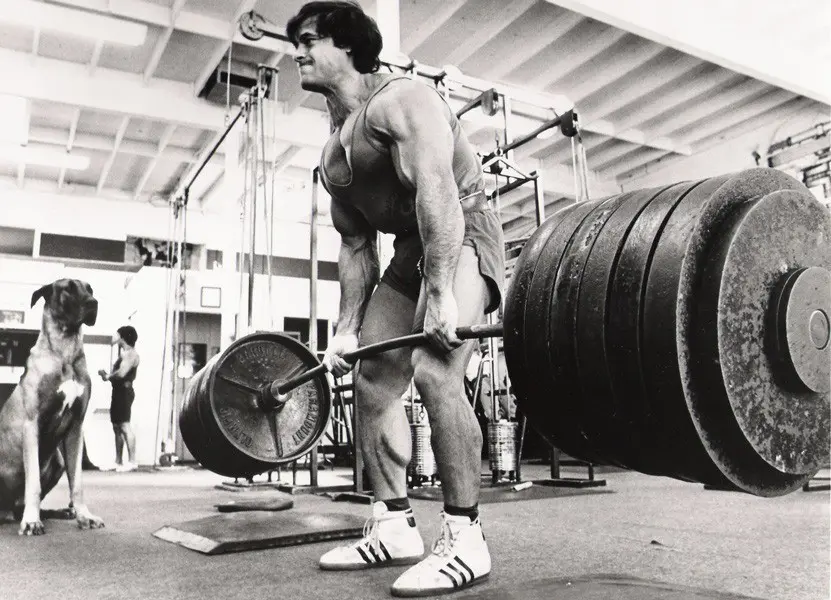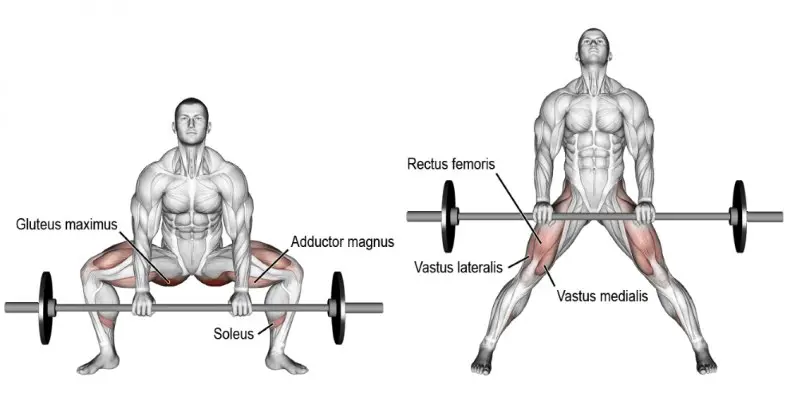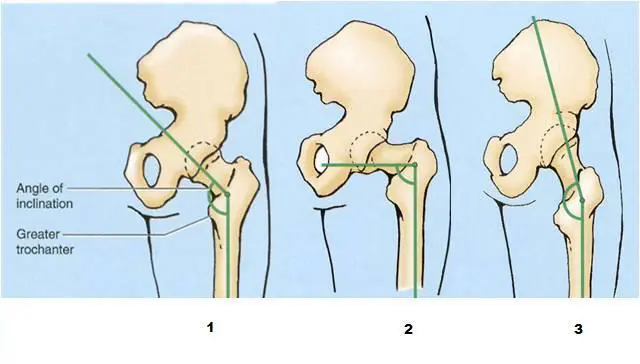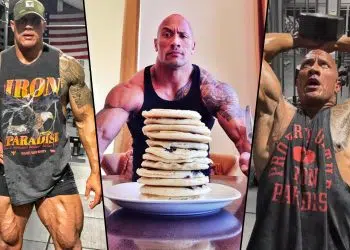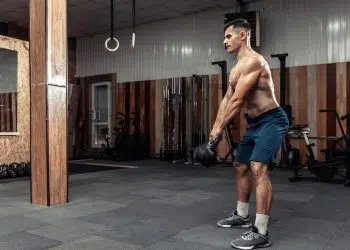The deadlift is one of the most effective strength training exercises for building full body power. It works virtually every major muscle group, from your hands and forearms to grip the bar, all the way down to your feet which root into the floor.
With proper form, deadlifts engage your core, lower back, glutes, hamstrings, quads, traps, lats, and more. They are a true total body move.
But not all deadlifts are created equal. There are two main styles of deadlifting:
- The traditional deadlift
- The sumo deadlift
In this comprehensive guide, we’ll compare and contrast these two deadlift variations. By the end, you’ll know which style is best for your goals and body type.
Traditional Deadlift Overview
The traditional deadlift, sometimes called the conventional deadlift, is the more classic deadlift style.
Level Up Your Fitness: Join our 💪 strong community in Fitness Volt Newsletter. Get daily inspiration, expert-backed workouts, nutrition tips, the latest in strength sports, and the support you need to reach your goals. Subscribe for free!
It uses a shoulder-width stance, with hands outside the legs gripping the barbell. The back is bent and hips lowered to grasp the bar, then raised as you stand up straight while lifting the weight.
Benefits of the traditional deadlift:
- Emphasizes the posterior chain muscles like glutes, hamstrings, lower back
- Builds tremendous strength in the erector spinae muscles of the back
- Allows you to lift very heavy loads due to efficient bar path and muscle recruitment
- Great for athletes who need hip extension power like sprinters
- Hits the upper back muscles like lats and traps as well
Downsides of the traditional deadlift:
- Can strain the lower back if form is not perfect
- Limited hip and ankle mobility can make it harder to get in proper start position
- May miss leg muscles like quads if not descending deep enough
The traditional deadlift is the style used in powerlifting competitions. It allows greater weight to be lifted due to an efficient bar path and use of larger muscle groups like the back.
If your goal is to get brutally strong and move big weight, the traditional deadlift is likely your best choice. Just be sure to master form to protect the lower back.
Sumo Deadlift Overview
The sumo deadlift uses a wide stance with hands gripping inside the legs. The back is more upright compared to a traditional deadlift.
Benefits of the sumo deadlift:
- Reduces strain on the lower back
- Emphasizes the legs more, especially inner thighs and quads
- Better for people with short arms and long torsos
- Can improve hip mobility with practice
Downsides of the sumo deadlift:
- Won’t build the back as much as a traditional deadlift
- Requires very good hip and ankle mobility to get into proper start position
- May allow less weight to be lifted due to inferior leverage
The sumo deadlift is excellent if you want more leg recruitment and less lower back strain. It’s a more quad-dominant movement.
People with short arms/long torsos tend to prefer the sumo style. But it requires impeccable mobility to perform properly.
Head-to-Head Comparison
Now that we’ve covered both lifts separately, let’s directly compare the traditional and sumo deadlift variations:
- Muscles worked: The traditional deadlift uses more back, while the sumo uses more legs. Traditional has a slight edge for more total muscle activation.
- Form and technique: Traditional deadlift allows more efficient bar path. Sumo requires greater mobility. Both need practice.
- Weights lifted: Traditional deadlift allows heavier loads due to mechanics and muscles used.
- Lower back safety: Sumo has the edge here. The more upright torso places less shear stress on the spine.
- Individual leverages: People with short limbs tend to prefer sumo, while long torsos favor traditional. Test both!
- Beginner-friendliness: For new lifters, the sumo may be slightly easier to learn. But both require coaching.
- Sport specificity: Traditional deadlift has more carryover to athletic power for sports like football.
As you can see, both deadlift styles have pros and cons. Neither is universally “better” than the other.
The best type of deadlift for you will depend on your specific goals, body proportions, mobility and athletic needs.
How to Choose Which Deadlift Variation is Best
Here are some simple rules of thumb for choosing a deadlift style:
- If your goal is maximal strength, especially in the posterior chain, traditional deadlifts are best. The extra back work will build raw power.
- If you have existing lower back issues, sumo deadlifts are likely the smarter choice. Their more upright posture places less shearing force on the spine.
- If you have short arms and long legs, give the sumo deadlift a try. The mechanics will likely suit your proportions well.
- If you play sports requiring hip extension power (like football), focus on the traditional deadlift for optimal athletic carryover.
- If you’re new to deadlifting or have mobility limitations, start with sumo deadlifts. They’re slightly more beginner friendly.
The only way to know for sure is to try both styles! Test traditional and sumo deadlifts and see which feels stronger and more comfortable based on your body.
It’s perfectly fine to incorporate both variations into your training routine for variation. Just don’t use radically different weights between them.
Master Proper Deadlift Form and Technique
Whichever deadlift variation you choose, utilizing proper form is critical for both optimal results and injury prevention.
Here are some key technique tips for deadlifting with great form:
- Pack your shoulders and brace your core before lifting. This protects your spine and activates more muscle.
- Lift your chest up and gaze forwards. Don’t round your upper back.
- Push your feet hard into the floor to drive through legs and hips.
- Keep the bar close to your shins as it rises, over the middle of the foot. Don’t let it drift forward.
- Sit back into hips and bend knees to lower bar. Do not round lower back.
- Feel the weight in the hamstrings and glutes. Lockout by squeezing glutes hard.
- Use controlled eccentrics. Don’t “drop” the barbell between reps.
Mastering the details of your deadlift form will pay huge dividends. You’ll lift heavier weights while minimizing injury risk.
Film yourself and seek coaching as needed to dial-in proper technique. It takes time and practice.
Take Your Deadlift to the Next Level
Adding deadlifts to your training routine can transform your whole body strength and power. Pick the variation that aligns with your goals and body type for best results.
Over time, try incorporating both traditional and sumo styles for variety and more complete development.
And above all, focus on impeccable exercise form and controlled progressions. Building deadlifting proficiency takes patience, but the payoff is immense.
With smart programming and practice, you’ll be deadlifting personal records in no time!
Now take a look at the differences and benefits of both the squat and the leg press it’s time to put another staple in any serious CrossFit, Fitness or Bodybuilding enthusiasts training arsenal to the test.
Happy Lifting!

